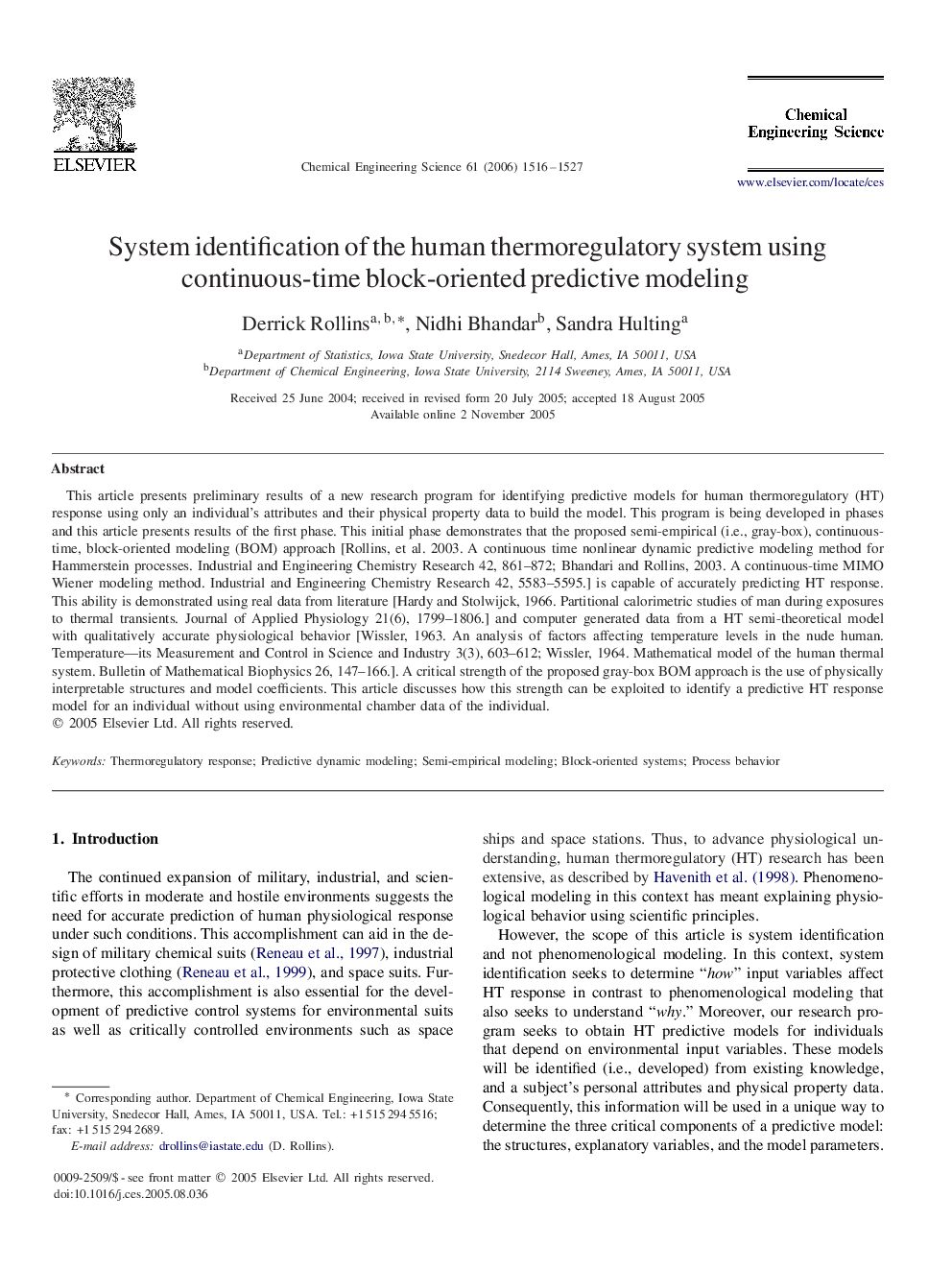| کد مقاله | کد نشریه | سال انتشار | مقاله انگلیسی | نسخه تمام متن |
|---|---|---|---|---|
| 159973 | 457054 | 2006 | 12 صفحه PDF | دانلود رایگان |
عنوان انگلیسی مقاله ISI
System identification of the human thermoregulatory system using continuous-time block-oriented predictive modeling
دانلود مقاله + سفارش ترجمه
دانلود مقاله ISI انگلیسی
رایگان برای ایرانیان
موضوعات مرتبط
مهندسی و علوم پایه
مهندسی شیمی
مهندسی شیمی (عمومی)
پیش نمایش صفحه اول مقاله

چکیده انگلیسی
This article presents preliminary results of a new research program for identifying predictive models for human thermoregulatory (HT) response using only an individual's attributes and their physical property data to build the model. This program is being developed in phases and this article presents results of the first phase. This initial phase demonstrates that the proposed semi-empirical (i.e., gray-box), continuous-time, block-oriented modeling (BOM) approach [Rollins, et al. 2003. A continuous time nonlinear dynamic predictive modeling method for Hammerstein processes. Industrial and Engineering Chemistry Research 42, 861-872; Bhandari and Rollins, 2003. A continuous-time MIMO Wiener modeling method. Industrial and Engineering Chemistry Research 42, 5583-5595.] is capable of accurately predicting HT response. This ability is demonstrated using real data from literature [Hardy and Stolwijck, 1966. Partitional calorimetric studies of man during exposures to thermal transients. Journal of Applied Physiology 21(6), 1799-1806.] and computer generated data from a HT semi-theoretical model with qualitatively accurate physiological behavior [Wissler, 1963. An analysis of factors affecting temperature levels in the nude human. Temperature-its Measurement and Control in Science and Industry 3(3), 603-612; Wissler, 1964. Mathematical model of the human thermal system. Bulletin of Mathematical Biophysics 26, 147-166.]. A critical strength of the proposed gray-box BOM approach is the use of physically interpretable structures and model coefficients. This article discusses how this strength can be exploited to identify a predictive HT response model for an individual without using environmental chamber data of the individual.
ناشر
Database: Elsevier - ScienceDirect (ساینس دایرکت)
Journal: Chemical Engineering Science - Volume 61, Issue 5, March 2006, Pages 1516-1527
Journal: Chemical Engineering Science - Volume 61, Issue 5, March 2006, Pages 1516-1527
نویسندگان
Derrick Rollins, Nidhi Bhandar, Sandra Hulting,